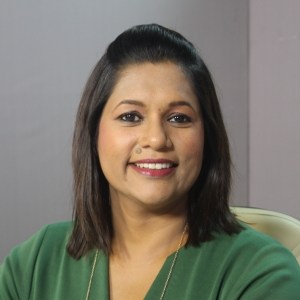Decoding exam culture in India
Parents and students in India place an enormous amount of importance on school marks and grades, which are primarily driven by year-end exams. The pressure to ‘perform’ on these exams is not only prevalent amongst high school students preparing for national level exams, but also increasingly experienced by students who are in elementary or middle school. This is something I noticed when my twin daughters, who are in the sixth grade, opted to stay at home to study for their final exams rather than attend a family wedding. Getting good grades has always been important and the central focus of school life for most students, as the hopes and dreams of the family, and sometimes the entire community, are placed on the child, especially amongst the middle class. In recent years, however, this focus has turned to mania.
 Photo by bruce mars from Pexels
Photo by bruce mars from Pexels
The 553,000 Indian students enrolled in educational institutions in locations as diverse as the US, Canada, UK, Australia, Germany, The Netherlands, Abu Dhabi and Singapore represent a tremendous economic and cultural opportunity for destination countries. Understanding India’s socio-cultural landscape, including the factors that contribute to exam mania - and the associated trickle-down effect on tutoring, extracurricular choices and self-awareness - can help recruitment and admissions representatives with marketing and enrollment efforts and independent education consultants in advising applicants.
1. The education structure of Indian high schools
At the end of 10th grade, students attempt a nationwide or statewide comprehensive exam, known in India as the “board exam”. The most common national 10th grade boards are CBSE and CISCE. Based on the results of these exams, students declare the major or ‘stream’ such as commerce, science or arts, that they will pursue in the 11th and 12th grades, which will then be the focus of their 12th grade board exams.
Most of India’s boards/curricula focus on rote learning and memorizing facts rather than on analytical thinking. Students are evaluated on their ability to regurgitate information verbatim, not on application of concepts to actual problems or situations. Additionally, board exams test what has been taught over the course of two years. This is in contrast with the US, where the student’s grade for a particular subject is comprised of periodic tests, coursework and an end of semester exam.
2. Entry criteria for colleges
The primary admissions criteria for college are the 12th grade board exam results and/or the results of specific entrance exams for majors in law, engineering and medicine. There are many students who score very well in the board exams, but who are not able to secure a place at the university of their choice due to high cut-offs. For example, St Xavier’s College in Mumbai is a highly reputed institution for arts, humanities and the social sciences. To enroll in its arts stream in 2016, the minimum score on the 12th grade board exam was 94.4 percent. That means, if a student scored 93.9 percent, he would not be eligible to enroll, regardless of other factors such as talent, legacy status or diversity elements.
In some colleges there are quotas for religious minorities and disadvantaged citizens, for whom required minimum scores or “cut-offs” are lower. There are also a handful of seats reserved under the sports and cultural quota, a total of 5 percent, which is the only time when extracurricular activities are considered for admission. The reservation of seats fluctuates between 40 to 50 percent, leaving limited spots for students who do not fall under these categories.
What’s clear though is that the stakes are high because Indian education has a “one and done” type of structure - a student who falls ill or experiences a family emergency during the board exam time may score poorly, leaving limited recourse for his future plans.
3. Low acceptance rates
According to a 2016-2017 government report, there are approximately 864 universities and 40,026 colleges in India. But, since only about 100 universities are considered to be of high quality, options are limited, especially when considering the country’s immense population. India’s youth population is one of the largest in the world - estimated at 356 million in the 10 to 24 year age range. This, coupled with a growing middle class, puts pressure on the limited institutions that offer quality education and the associated admissions rates. The Indian Institutes of Technology, for example, have an acceptance rate that is less than 2 percent; roughly 9,600 seats for over 500,000 entrance exam test takers. Universities are working to curb this problem, with new institutions being established and more seats being added to existing programs. For example, in Mumbai in 2017, there were 13,808 more places available across 39 new colleges as compared to the previous year. This is, however, still not enough to meet the demand, leading students to consider opportunities abroad.

4. Tutors and talent
Most parents and teachers alike measure academic excellence in terms of high marks; which is why, if a student is unable to perform academically, he seeks the help of private tutors. Layered on that is the fact that, in many cases, teachers are not qualified to teach particular subjects and are therefore unable to adequately support students. Further, in some schools, there is only one teacher for 60-70 students, leading to subpar teaching and students engaging tutors at home. This leads to a “parallel school” system in which students attend formal school from 8am to 3pm and then tutoring sessions from 5pm to 10pm, a setup that fuels burnout, stress and an obsession with academic performance as a measure of worth. This paradigm is especially prevalent in smaller cities and towns, where teacher salaries can be low, driving trained professionals to start their own tutoring centers.
There is also belief that if you study hard enough, you can be smart enough. So instead of studying smarter and learning time management skills, students study year-round, losing perspective on other aspects of life. Interests beyond academics are often abandoned after 8th grade, talent is dismissed as unimportant and aspiring for careers in sports, fine arts, music and theatre is not taken seriously in most families. And for those who do continue to pursue non-academic interests, they are often channeled into exam-based achievement. My twins enjoyed both piano and ballet for many years, that is, until their instructors/academies increased focus on internationally-proctored annual exams as a means to assess competency. The joy they had found in music and movement had been replaced with yet another dreaded exam that required months-long preparation.
5. Alternatives
In recent years, there has been increasing interest in international schools and curricula that offer a more holistic approach to education, with less emphasis on exams and grades and more focus on nurturing non-academic talents. Programs like the International Baccalaureate Diploma Program (IBDP), IGCSE and A-Levels have become popular globally.
The number of schools in India offering the IBDP went from 11 in 2003, according to the Times of India, to 146 in 2018, as per the IB website. While these programs allow for holistic development, they do have terminal examinations at the conclusion of 12th grade. In the case of the IBDP, this includes a set of six papers that are interdisciplinary and global in nature, where the focus is on critical analysis versus memorization.
Families are also becoming more open to boarding schools, where academics and extracurriculars are managed in a holistic setting, enabling students to nurture different interests more easily.
The majority of Indian students, however, are still enrolled in national curricula, meaning they will remain under pressure to score well on exams.
